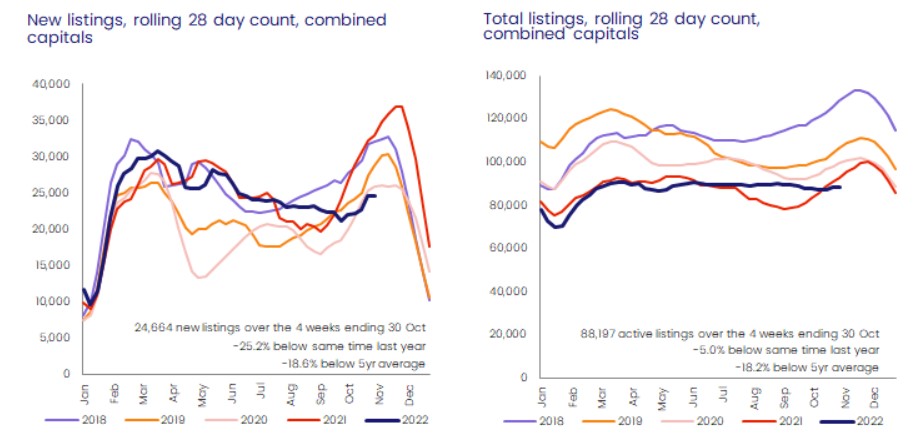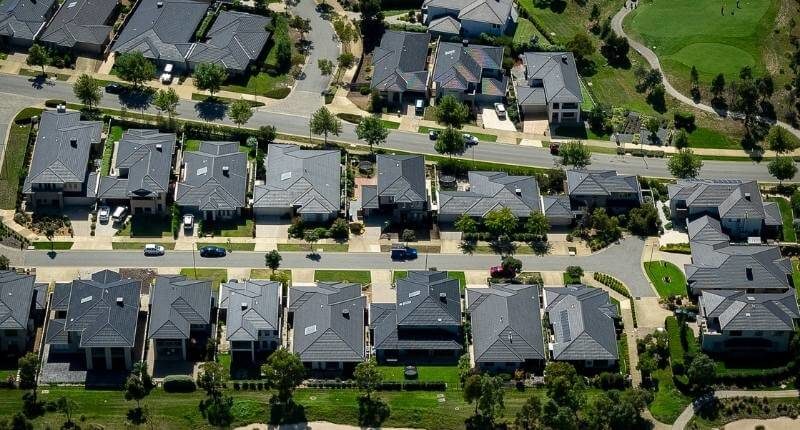- Values fell -1.2% across the board
- Brisbane recorded a -2% decline, while Perth recorded just a -0.2% decline
- Houses have declined a much more rapid pace than units
The geographic scope of the downturn in the Australian housing market has broadened through October, with every single capital city and rest-of-state region – with the exception of South Australia – recording a decline in housing values.
Overall, values fell -1.2% last month. The falls ranged from – 2% in Brisbane to just -0.2% in Perth.
The rates of decline, however, remain diverse. The pace of falls has eased over the past two months across Sydney and three months for Melbourne. On the other hand, it has gathered momentum in Brisbane where they are now falling the most rapidly of any capital city or rest-of-state region.
Tim Lawless, CoreLogic’s Research Director, said it is probably too early to claim that the worst of the decline phase is over.
“Despite the easing in the pace of decline, with Australian borrowers facing the double whammy of further interest rate hikes along with persistently high and rising inflation, there is a genuine risk we could see the rate of decline re-accelerate as interest rates rise further and household balance sheets become more thinly stretched,” he said.
“To-date, the housing downturn has remained orderly, at least in the context of the significant upswing in values. This is supported by a below-average flow of new listings that is keeping overall inventory levels contained.
Tim Lawless, CoreLogic

“There’s also tight labour market conditions, an accrual of borrower savings and a larger than normal cohort of fixed interest rate borrowers, who have so far been insulated from the rapid rise in interest rates.”
Despite the decline, housing values across most regions remain well above pre-Covid levels.
For the combined capital cities, housing values have fallen – 6.5% following a peak 25.5% price rise. Since January, Sydney home values have declined by -10.2%, with Melbourne house values down -6.4%.
Based on the 310 SA3 sub-regions analysed nationally (excluding low sales or low confidence scores) only 16 regions are at cyclical highs, as of last month. This is skewed towards Perth, Adelaide and some regional markets.
Home values declining at a faster rate compared to units
Capital city house values fell by -1.2% in October, while units fell by -0.7% in October. The underperformance of the lower-density sector has been a notable feature of the downturn, offsetting the substantially larger rise in home values during the growth phase.
Through the upswing, capital city house value increased by 29.9% – double that of unit values, which only rose by 13.2%. Since the peak in April, capital city house values fell by -7.2%, while unit values are down by – 4.2%.
Mr Lawless noted the smaller decline in values across the unit market can be attributed to the relatively affordable price points across the medium to high-density sector.
“The gap between median house and unit values increased to record levels through the COVID upswing. With borrowing capacity being hit hard as interest rates rise, it’s likely more housing demand has been diverted towards more affordable sectors of the market,” he said.
In terms of supply, Mr Lawless noted that total advertised listings is holding firm, around -5% lower than a year ago and -18.2% below the five-year average.
“Although we are now seeing a late spring response to freshly advertised supply, every capital city except Darwin is recording a lower than average flow of new listings added to the market over the past four weeks,” Mr Lawless said.
“The low number of freshly advertised properties is probably helping to contain price falls to some extent. So far we haven’t seen any evidence of panicked selling or forced sales.”
In regards to demand, the estimated number of home sales has also held relatively firm.
“The number of home sales is well down from the highs of late last year, however the fact that sales activity is still above the five-year average over the past three months reflects a base level of demand remains for housing,” Mr Lawless said.
“Housing finance data shows subsequent buyers, such as upgraders, downsizers or movers, have been the most resilient sector of the market since interest rates started to rise. As interest rates rise further, it’s likely sales activity will also trend lower as borrowing capacity is reduced.”

Rents rise 0.6%
Nationally, rents rose by another 0.6% in October. Units led the way, with a 1.1% rise, while house rents increased by 0.5%.
The rise in unit rents relative to houses can be attributed to more affordable rental options, those wishing to be closer to offices in the CBDs and overseas migration, all of which historically favour units over houses.
“A gradual slowdown in rental growth in the face of low vacancy rates could be an early sign that renters are reaching an affordability ceiling. Since the onset of COVID, capital city rents have risen 17.7% and regional rents are up 25.5%,” Mr Lawless said.
“Although rents are likely to continue to rise, it’s likely renters will be progressively seeking rental options across the medium to high density sector, where renting is cheaper, or maximising the number of people in the tenancy in an effort to spread higher rental costs across a larger household.”








